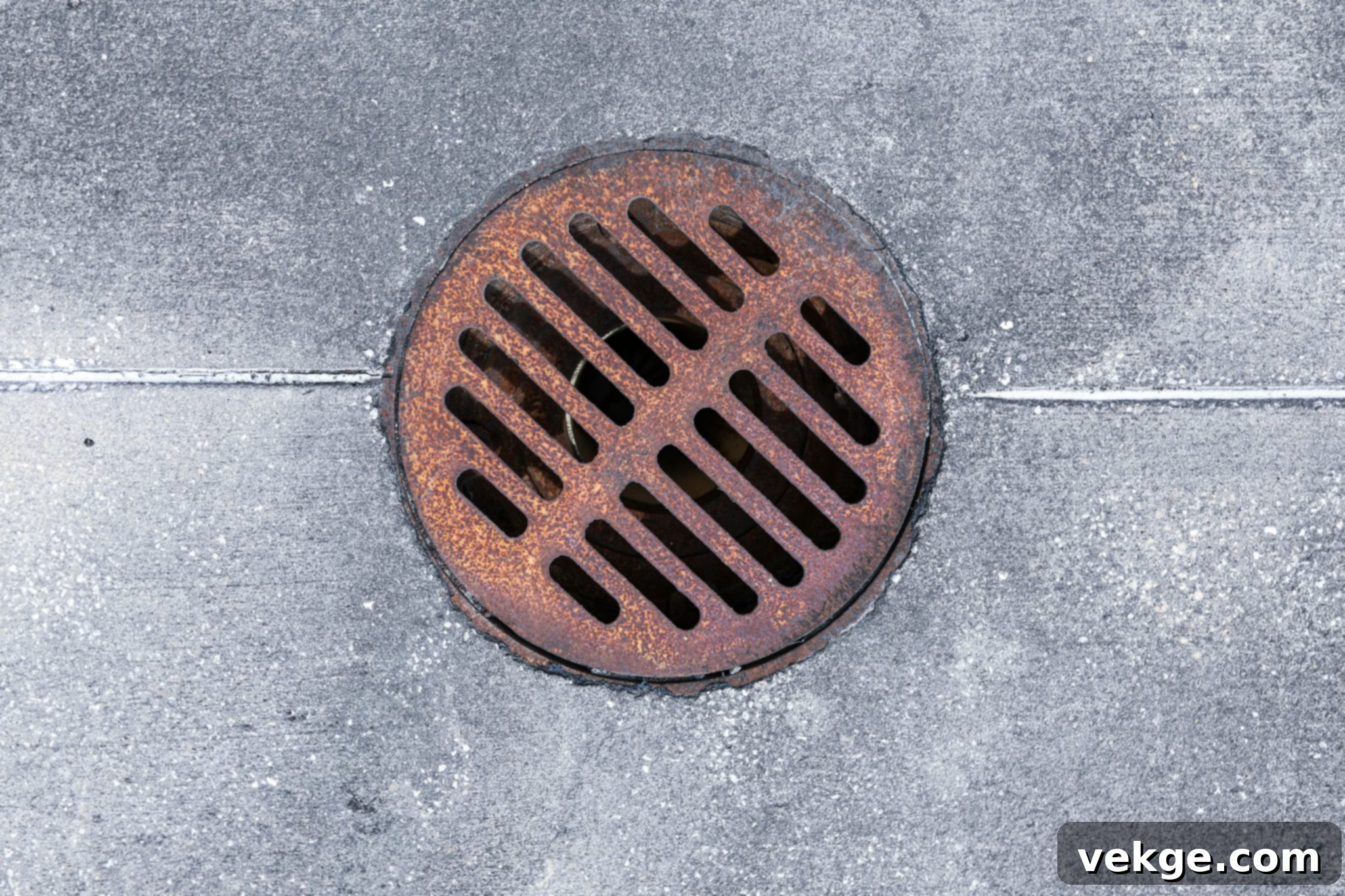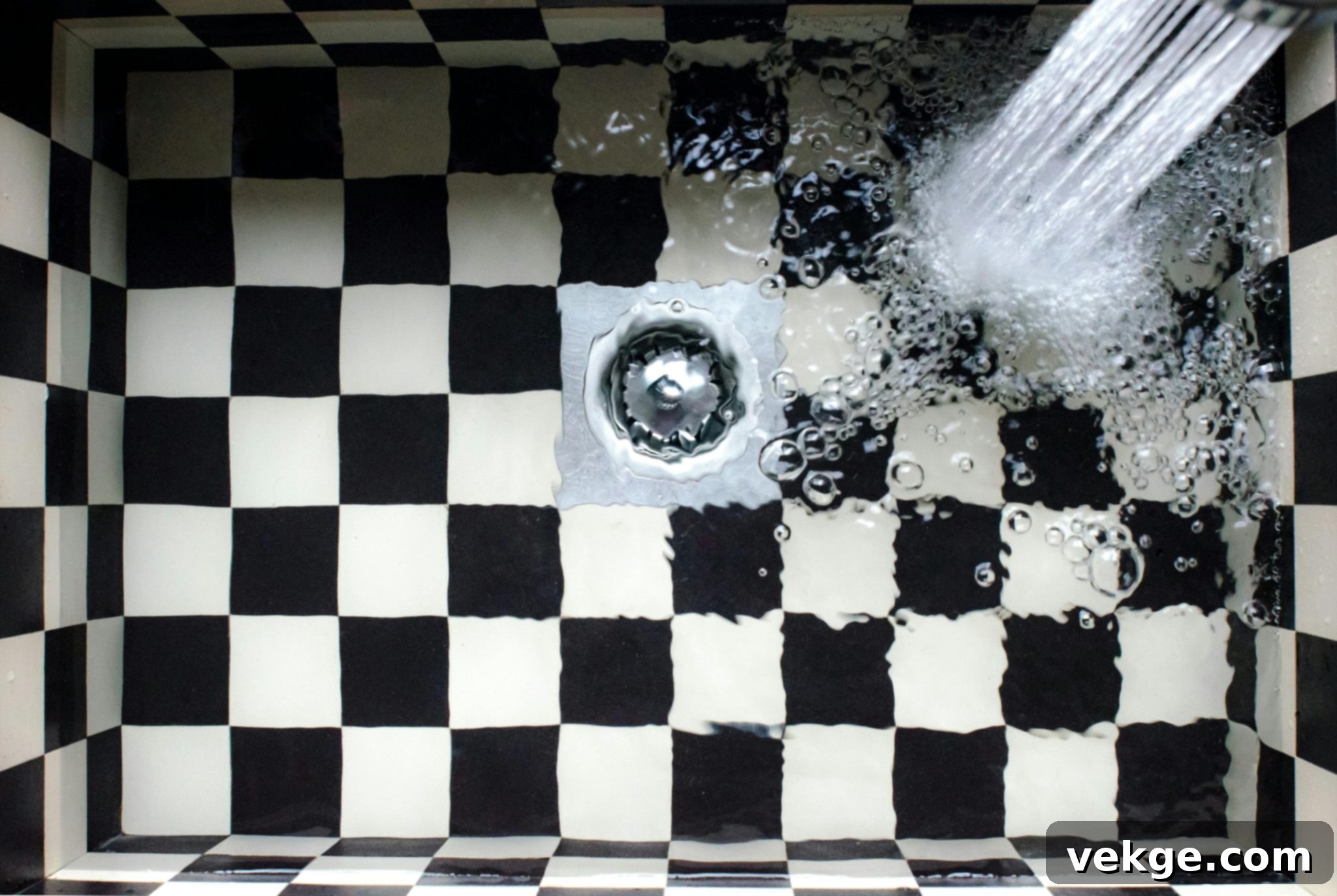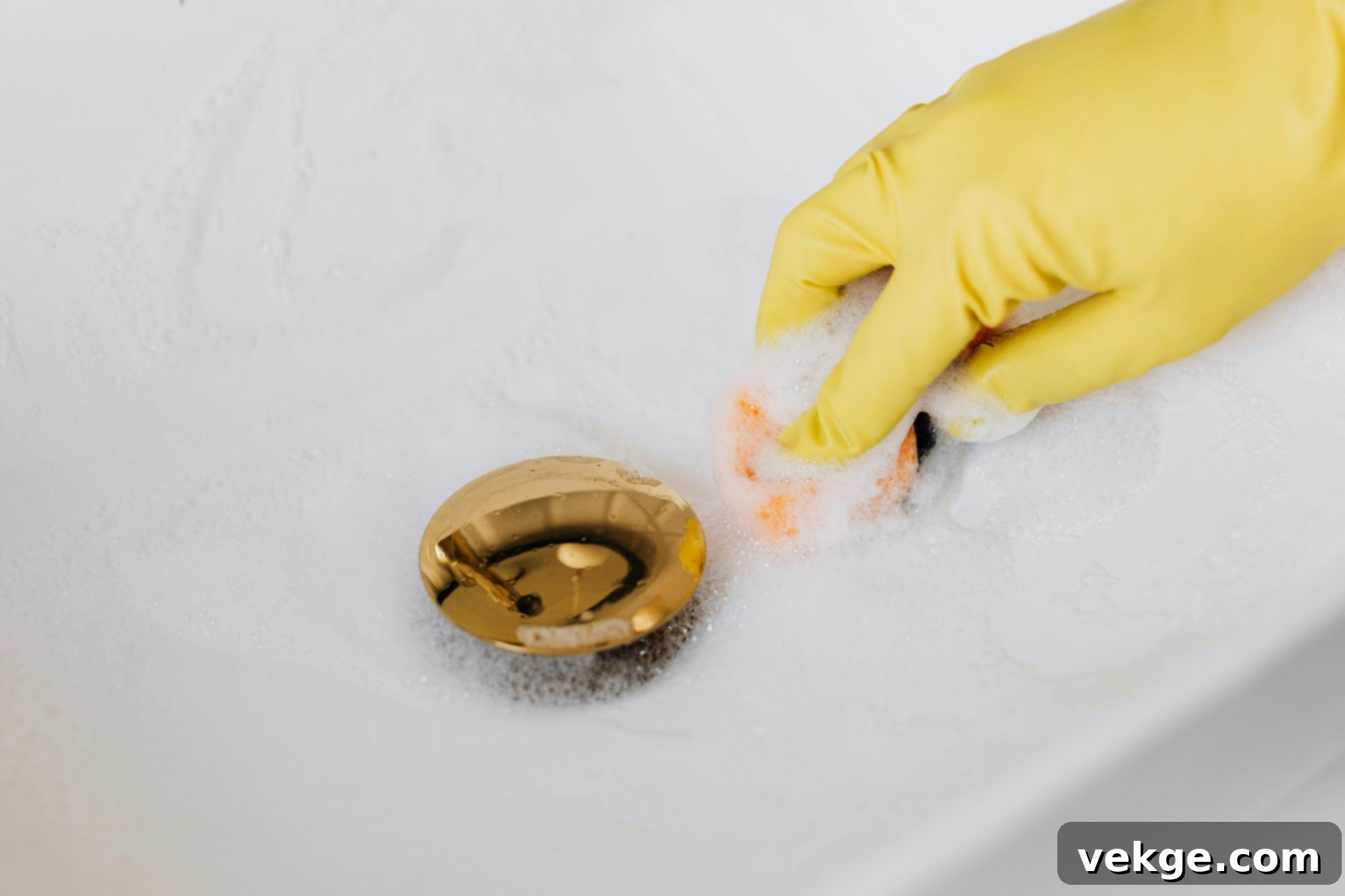Comprehensive Guide to Unclogging and Preventing Shower Drain Blockages
There are few household frustrations quite like stepping into your shower, expecting a refreshing cleanse, only to find yourself standing in a shallow pool of water rising around your ankles. This all-too-common scenario is a tell-tale sign of a clogged shower drain. While it might seem like a minor inconvenience, a persistent slow-draining or completely blocked shower can disrupt your daily routine, lead to unsanitary conditions, and even cause more significant plumbing issues if left unaddressed. Understanding the root causes of these blockages and knowing how to effectively tackle them, whether with DIY solutions or professional help, is crucial for maintaining a healthy and functional home. This comprehensive guide will walk you through identifying a clogged drain, exploring its common culprits, offering practical home remedies, advising on when to call a plumber, and providing essential tips for future prevention.
How Do You Know if Your Shower Drain Is Clogged? Recognizing the Signs

Detecting a clogged shower drain early can save you from a worsening problem and potentially costly repairs. While standing water is the most obvious sign, several other indicators can alert you to an impending or existing blockage:
- Slow Drainage: This is often the first symptom you’ll notice. Water starts to accumulate in the shower basin for longer than usual, taking several minutes to fully drain after you turn off the water. Initially, it might be just a slight delay, but it will progressively worsen as the clog grows.
- Pooling Water: If the water doesn’t drain at all, or pools significantly, especially during your shower, you have a substantial blockage. This means the drain is severely obstructed, preventing proper water flow.
- Gurgling Sounds: Strange gurgling or bubbling noises coming from the drain when water is running (either in the shower or from a nearby fixture) indicate air trapped in the pipes due to a partial blockage. As water tries to push past the obstruction, air gets displaced, creating these distinctive sounds.
- Unpleasant Odors: Stagnant water, combined with trapped hair, soap scum, and other organic matter, begins to decompose over time. This decomposition releases foul, mildewy, or even sewage-like odors that waft up from the drain, making your bathroom less inviting.
- Visible Debris: Sometimes, you might see hair, soap scum, or other debris accumulating around the drain opening, suggesting that the drain is struggling to pull everything down. This visible buildup is a clear signal that the drain’s capacity is being reduced.
- Water Backing Up in Other Drains: In severe cases, particularly if the clog is further down in your main drain line, you might notice water backing up in other connected fixtures, such as a toilet or sink, when you use the shower. This indicates a widespread plumbing issue requiring immediate attention.
If you experience any of these symptoms, it’s a clear indication that action is needed to prevent the problem from escalating into a more serious plumbing emergency.
What Are the Common Causes of a Clogged Shower Drain?
Understanding the culprits behind a clogged shower drain is the first step toward effective prevention and resolution. Most shower clogs are an accumulation of common household materials:
Hair Buildup
Hair is undeniably the primary antagonist in the fight against shower drain clogs. Every time we wash our hair, strands inevitably fall out and get washed down the drain. While individual hairs seem insignificant, they don’t dissolve. Instead, they quickly intertwine with each other, forming a tangled web. This web then acts as a net, catching soap residue, skin flakes, and other small debris, leading to a progressively larger, denser, and more stubborn blockage. Long hair, short hair, and even pet hair can contribute significantly to this issue.
Soap Scum
Another major contributor to shower drain blockages is soap scum. This sticky, off-white residue is formed when the fatty acids in bar soap react with minerals (calcium and magnesium) found in hard water. Unlike liquid body washes, bar soaps are more prone to creating this insoluble film. Soap scum adheres to the inner walls of your pipes, narrowing the passage and creating a rough surface where hair and other debris can easily catch and accumulate, accelerating the formation of a solid clog.
Sediment Buildup
Sediment buildup is particularly common in areas with hard water. Hard water contains high concentrations of dissolved minerals like calcium and magnesium. Over time, these minerals can precipitate out of the water and accumulate on the inside of pipes, forming a hard, crusty layer. This mineral scale effectively shrinks the internal diameter of the pipes, making them more susceptible to blockages from hair and soap scum. Beyond hard water minerals, small amounts of dirt, sand, or other grit can also wash down the drain and contribute to sediment accumulation.
Other Contributing Factors
While hair, soap scum, and mineral deposits are the main offenders, other items can also find their way into your shower drain and contribute to clogs:
- Small Objects: Accidental drops of razor caps, shampoo bottle lids, small toys, or even jewelry can become lodged in the drain, acting as a base for hair and soap scum to build upon.
- Grease and Oil: Although less common in shower drains than kitchen sinks, if you wash greasy hair or other oily substances in the shower, these can solidify and stick to pipe walls, trapping other debris.
- Corroded or Damaged Pipes: Older plumbing systems, especially those with cast iron pipes, can suffer from corrosion and deterioration. Rough, pitted interior surfaces can easily snag hair and debris, leading to frequent clogs.
- Tree Roots: In severe cases, especially for ground-level showers or if the main sewer line is affected, tree roots can infiltrate pipes through tiny cracks, creating a dense network that traps waste and causes significant blockages. This typically requires professional intervention.
How To Unclog a Shower Drain at Home? Effective DIY Solutions

Before reaching for harsh chemical drain cleaners, which can be damaging to your pipes and the environment, try these effective and safer DIY methods to unclog a shower drain:
1. The Plunger Method
A good old-fashioned plunger is surprisingly effective for many drain clogs. For shower drains, a standard cup plunger usually works best.
- Prepare the Area: Remove the drain cover if possible. Ensure there’s enough standing water in the shower basin to submerge the rubber cup of the plunger. If not, add a few inches of water. This water helps create a tight seal.
- Create a Seal: Place the plunger firmly over the drain, ensuring it forms a complete seal around the opening.
- Plunge Vigorously: Push down and pull up the plunger handle with quick, strong motions for about 15-20 seconds. This creates pressure and suction that can dislodge the clog.
- Check Drainage: Remove the plunger and observe if the water drains faster. You might see some debris come up. Repeat the process a few times if necessary.
2. The Drain Snake (Hand Auger)
If plunging doesn’t work, a drain snake (also known as a hand auger or plumbing snake) is an invaluable tool for reaching deeper clogs, especially those caused by hair.
- Remove Drain Cover: Take off the shower drain cover.
- Insert the Snake: Slowly feed the end of the snake into the drain opening. Be gentle and don’t force it. If you meet resistance, rotate the snake to help it navigate bends in the pipe.
- Engage the Clog: Once you feel resistance that indicates the clog, crank the handle of the snake to extend its coil or twist it. This action helps the snake’s tip or barb hook onto the hair and debris.
- Pull it Out: Carefully and slowly pull the snake back out, hopefully bringing the clog with it. You’ll likely see a gruesome ball of hair and grime.
- Clean and Flush: Remove the debris from the snake, and then flush the drain with hot water to clear any remaining smaller particles.
3. Baking Soda and Vinegar Solution
This natural, eco-friendly method uses a chemical reaction to help break down clogs. It’s particularly effective for soap scum and minor hair clogs.
- Clear Excess Water: Remove as much standing water from the shower basin as possible.
- Pour Baking Soda: Pour one cup of baking soda directly down the drain. For best results, try to get it directly into the drain opening, not just sitting in the basin.
- Add Vinegar: Follow immediately with one cup of white vinegar. You should hear a fizzing sound, indicating a chemical reaction.
- Let it Sit: Cover the drain with a plug or rag to contain the reaction and let the mixture work for at least 30 minutes, or even a few hours for stubborn clogs. The reaction creates foam and mild acids that can dissolve grease and loosen debris.
- Flush with Hot Water: After the waiting period, flush the drain with several cups of very hot (but not boiling, especially for PVC pipes) water to wash away the loosened clog.
4. Manual Hair Removal
Sometimes, the clog is close to the surface and can be removed manually.
- Wear Gloves: Always wear rubber gloves to protect your hands.
- Remove Drain Cover: Take off the drain cover.
- Reach In: Use needle-nose pliers, tweezers, or even a bent wire coat hanger (create a small hook at the end) to reach into the drain opening.
- Pull Out Debris: Gently try to snag and pull out any visible hair, soap scum, or debris that you can reach. You might be surprised by how much comes out!
- Flush: Once you’ve removed as much as possible, flush the drain with hot water.
5. Boiling Water
For minor clogs caused primarily by soap scum or grease, simply pouring boiling water down the drain can sometimes do the trick.
- Boil Water: Heat a kettle of water to a rolling boil.
- Pour Slowly: Carefully pour the boiling water down the drain in two or three stages, allowing a few seconds between each pour. This gives the hot water time to work on the clog.
- Caution: Avoid this method if you have PVC pipes and suspect they are old or damaged, as extremely hot water can potentially soften or warp them. If unsure, use very hot tap water instead of boiling.
When Should You Call a Professional for a Clogged Shower Drain?
While many clogs can be resolved with DIY methods, there are specific situations where calling in a professional plumber is not just recommended, but essential. Attempting to fix complex plumbing issues yourself can often lead to greater damage and higher repair costs.
- Persistent Clogs: If you’ve tried multiple DIY methods (plunging, snaking, baking soda/vinegar) over several attempts and the shower drain remains stubbornly clogged, it’s a sign that the blockage is too severe or too deep for home remedies.
- Water Backing Up in Other Drains: If, when you use the shower, water backs up in your toilet, sink, or another drain in your home, it indicates a problem with your main sewer line, not just the shower drain. This is a serious issue that requires professional diagnosis and repair.
- Foul Sewage Odors: While stagnant water can produce bad smells, a distinct, strong sewage odor emanating from your drains can signal a broken sewer line, a severe blockage in the main line, or even issues with your home’s vent system. These require immediate professional attention.
- Water Leaks or Pipe Damage: If you notice water leaking from pipes beneath the shower or any visible pipe damage, do not attempt a DIY fix. A professional can diagnose the leak’s source and repair it without causing further structural damage to your home.
- Recurring Clogs: If your shower drain clogs frequently, even after successful DIY clearing, it suggests an underlying issue that needs professional assessment. This could be due to corroded pipes, tree root intrusion, or improper pipe installation.
- Safety Concerns with Chemical Cleaners: If you’ve used harsh chemical drain cleaners without success, it’s particularly important to call a professional. These chemicals can be toxic, dangerous to handle, and can damage pipes. A plumber will have the necessary safety equipment and expertise to deal with the situation.
- Lack of Expertise or Tools: If you’re uncomfortable with plumbing tasks or lack the proper tools (like a heavy-duty drain auger or hydro-jetting equipment), calling a professional saves you time, frustration, and potential injury.
Professional plumbers have specialized equipment such as drain cameras to pinpoint the exact location and nature of the clog, and powerful tools like hydro-jetters to clear even the toughest blockages without damaging your pipes. Investing in professional help when needed can prevent minor issues from turning into major, costly plumbing disasters.
How To Prevent a Clogged Shower Drain in the Future? Proactive Maintenance Tips
Prevention is always better than cure, especially when it comes to clogged drains. Implementing a few simple habits can significantly reduce the likelihood of future shower drain blockages and keep your plumbing running smoothly.
1. Use a Drain Cover or Hair Catcher
This is arguably the most effective and simplest preventive measure. A drain cover, screen, or hair catcher acts as a barrier, trapping hair and larger debris before it enters the drainpipe. These inexpensive tools come in various designs (silicone, stainless steel, dome-shaped) and are readily available at most hardware stores. Make sure to clean the drain cover after every shower, disposing of the trapped hair and debris in the trash, not down the toilet or sink.
2. Flush the Drain Regularly with Hot Water
Make it a habit to flush your shower drain with hot water regularly. Once a week, after your shower, let the hot water run for a few minutes. This can help dissolve any lingering soap scum, grease, and minor residue that might be starting to accumulate, preventing them from hardening and forming a solid clog. For an extra boost, consider following this with a small amount of baking soda and hot water once a month.
3. Brush Hair Before Showering
Brushing your hair thoroughly before stepping into the shower can significantly reduce the amount of loose hair that goes down the drain. This simple act can catch many strands that would otherwise contribute to a clog.
4. Avoid Washing Oily or Greasy Substances Down the Drain
While primarily a concern for kitchen sinks, be mindful of washing anything excessively oily or greasy in the shower. These substances can solidify in the pipes, creating sticky patches where hair and soap scum can easily adhere.
5. Use Liquid Soaps and Shampoos
Bar soaps are notorious for contributing to soap scum buildup. Switching to liquid body washes and shampoos can help minimize this issue, as they tend to dissolve more readily in water and leave less residue.
6. Limit Chemical Drain Cleaners
As mentioned earlier, chemical drain cleaners can be harsh on your pipes, potentially causing corrosion or weakening over time, especially with repeated use. They can also be hazardous to your health and the environment. Opt for natural solutions like baking soda and vinegar or enzymatic drain cleaners that use beneficial bacteria to break down organic matter, if preventative treatment is desired.
7. Regular Professional Drain Maintenance
For older homes, properties with hard water, or if you’ve experienced recurring clogs, consider scheduling periodic professional drain maintenance. Plumbers can perform a thorough cleaning using specialized tools like hydro-jetting, which blasts away buildup with high-pressure water, ensuring your pipes are clear and free-flowing for the long term.
By adopting these preventative measures, you can dramatically reduce the chances of facing a clogged shower drain, ensuring your daily shower routine remains a hassle-free and enjoyable experience.
